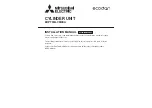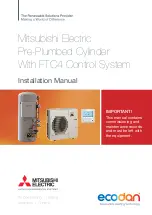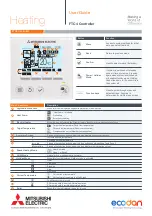
BRIDGEGUARD PLUS
TM
MANUAL
7
SECTION 1 - SAFETY
1.5 Personnel Requirements-Training
1.5.1 Before commissioning the equipment, personnel must be trained by the owner. Log the implementation of training for better
traceability.
Example of a training log:
Date
Name
Training Type
Training Instructor
Signature
11/5/2019
John Doe
First safety training for personnel
Dave Miller
1.6 Personal Protective Equipment
1.6.1 For every task, always use:
Safety helmet:
For protection against falling or flying parts and materials.
Protective gloves:
For the protection of hands against friction, scrapes, puncture or deeper wounds, as well as against contact with hot
surfaces.
Protective work clothing:
Primarily for protection against entrapment by moving machine parts. Work clothing must be close fitting with
a low resistance to tearing; it must have close-fitting sleeves and no protruding parts.
Protective footwear:
For protection against heavy failing parts and slipping on slippery floors.
For special tasks, specific protective equipment is required when executing particular tasks:
Safety eye wear:
For eye protection against harmful influences such as strong light, chemicals, dust, splinters or weather effects.
Hearing protection:
For protection against loud noises and to prevent acoustic trauma.
Breathing mask (FFP-3 - according to country-specific requirements):
For protection against materials, particles, and organisms. In
this case, for protection against the dust produced by the abrasion of carbon brushes and the PVC insulation of the conductor rail.






































